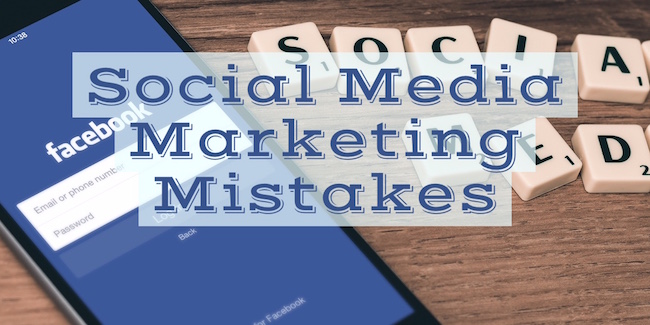
 Social media contests provide a fantastic opportunity to drive a tonne of engagement, assemble mark mindfulness, advance certain items/administrations, increment your adherents, and gather new lead data. With every one of the advantages online networking challenges bring to the table, it’s not astonishing they’re so prevalent. They can offer astounding outcomes—insofar as they’re actualized accurately.
Social media contests provide a fantastic opportunity to drive a tonne of engagement, assemble mark mindfulness, advance certain items/administrations, increment your adherents, and gather new lead data. With every one of the advantages online networking challenges bring to the table, it’s not astonishing they’re so prevalent. They can offer astounding outcomes—insofar as they’re actualized accurately.
Sadly, there are a few normal errors organisations and advertisers make that can greatly ruin their outcomes. To help you get the most out of your challenges, here are the five most basic mix-ups you could make on your online networking challenges, in addition to tips on the best way to cure them.
1. Not Using Contest Software To Capture Lead Information Of Social Media Marketing
Engagement is commonly the greatest concentration for some company when they’re facilitating web-based social networking challenges. While it’s unimaginably profitable and ought to never be downplayed, in case you’re concentrating just on engagement in most web-based social networking challenges, you’re passing up a major opportunity. Notwithstanding engagement, producing new lead data is a gigantic open door than online networking challenges can display.
Section structures can be made and can be on presentation pages off-stage, or can be included in a tab Facebook to gather lead data.
Some businesses who are new to social media marketing don’t even realise that you can capture lead information on social media contests; users won’t, after all, be likely to send you their email or phone number in a comment or private message.
This is the place challenge applications come in. There are a variety of social media contest apps and software that can help you optimise your contests. One immense advantage to challenge programming like the challenge applications here at Shortstack—is that they’ll help you to make presentation pages committed to social challenges where you can really catch lead data.
Shortstack has simple-to-construct passage shape layouts, where you can add the fields you need to gather the lead data that you require.
On the section frames, clients need to round out to participate in the challenge, make a point to get the data you require, whether that is an email address, telephone number, postal district, or something else. On the off chance that you offer an important prize, this gives you the chance to get a tremendous measure of new potential leads for a little cost by examination, the lion’s share of whom will probably be in your intended interest group.
2. Not Choosing a Mobile-Optimized Landing Page
So those contest entry landing pages discussed above? They need to be optimised for mobile devices, particularly since more users than ever are on social media via mobile. This is the place picking the correct challenge programming can become possibly the most important factor; there are a huge amount of choices out there for challenge applications, yet they’re not all made the equivalent.
You require your point of arrival and challenge passage structures to chip away at a wide range of gadgets for the best reach and engagement with your challenge.
Preferably, attempt to pick programming that will make it simple for you to make presentation pages that will be both ready to be seen on portable, and simple for clients to round out.
Test your greeting page for your challenge on numerous gadgets and if essential different programs to ensure it works. Along these lines, you aren’t passing up a major opportunity for any potential leads and engagement you could get.
3. Your Contests Run for a really long time (or Too Short)
Online networking challenges are somewhat similar to Goldilock’s porridge; you don’t need them to be too long, or too short—the length must be perfect.
In the event that your challenges are too short, you won’t get the outcomes you need, since you likely won’t have enough time to get the word out, and clients won’t have enough time to take an interest.
Around two weeks for a challenge is a decent beginning spot to consider for online networking challenges.
I’ve additionally observed the other side of this be valid: If challenges are too long, direness is missing, and a shockingly expansive number of clients appear to fall on the “I’ll get to it later” side of the range.
The time allotment that is best will rely on upon your individual challenge. I’ve seen streak challenges that lone kept going 60 minutes, where the principal [insert number here] individuals who made the fancied move won a prize. These can make a considerable measure of energy, and keep individuals watching your page.
This challenge obliges clients to accomplish more than simply round out a shape and submit; they have to print something out, bring a photo with it, and share it on numerous areas. The length for this challenge ought to be on the more drawn outside.
By and large, a great run to pass by is shorter, littler spending challenges that concentrate on a suggestion to take action kind of challenge (like Pin it to Win it or Retweet challenges) do well with a time span of about a week, possibly two. Huge spending challenges that are being utilised to advance your image or your items and highlight a huge giveaway (think an iPad contrasted with a $25 iTunes blessing card) can go longer, about a month. This is particularly valid if more mind boggling engagement is required as if a client needs to make a Pinterest board or Snap a photo of themselves utilising your item.
4. Not Promoting Your Contest Across Multiple Platforms
This is a basic mix-up, however, a charming one. A lot of organisations will run a stunning Twitter challenge, for instance, yet they just advance it on Twitter. They don’t likewise present the connection on the pertinent Tweet on Facebook, Instagram, on their sites, or in their email advertising effort. These are altogether squandered open doors. The more places you’re advancing your challenge, the more engagement you could get.
This is another advantage to social challenge applications; a few, as Shortstack, empower you to post the point of arrival or share data about the challenge on numerous stages, expanding potential engagement ten times.
Likewise, you need to advance your challenge some time recently, amid (numerous circumstances), and after it runs. This guarantees you get the most permeability for it conceivable, and a while later you can share a couple presents on thank clients for taking an interest and telling them you welcome it.
This is an incredible case of keeping on building buildup after a challenge is over; the business retroactively declared including additional prizes in light of the fact that the sections were so awesome.
5. Not Following Platform Rules
Staying aware of the considerable number of rules that Facebook alone has can be troublesome. When you consider the quantity of rules that all the diverse stages have, it can deplete. Facebook has prohibited like-gating, for instance, and asking clients to repin just a single picture on Pinterest is really breaking their challenge rules (however you can ask them to repin any substance from a determination).














